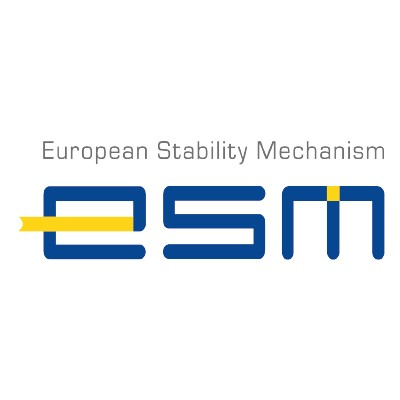Ukraine's Currency Crossroads: The Shift from Dollar to Euro
May 8, 2025, 9:45 am

Location: Belgium, Brussels-Capital, Brussels
Employees: 1001-5000
Founded date: 1958
Total raised: $310.85K

Location: United States, District of Columbia, Washington
Employees: 10001+
Founded date: 2000
Ukraine stands at a pivotal juncture. The winds of change are blowing, and the country is contemplating a significant shift in its monetary policy. The U.S. dollar, long the bedrock of Ukraine's economy, may soon take a backseat to the euro. This potential transition reflects deeper geopolitical currents and Ukraine's evolving relationship with Europe.
The hryvnia, Ukraine's national currency, has relied heavily on the dollar since its introduction in 1996. However, as the global landscape shifts, so too must Ukraine's economic strategies. Central Bank Governor Andriy Pyshnyi has indicated that the time has come to reassess the currency's reference point. The euro could soon take the lead, driven by Ukraine's aspirations for European Union membership and the need for stronger defense capabilities.
The backdrop is complex. Ukraine is embroiled in a protracted conflict with Russia, which has not only strained its economy but also reshaped its alliances. The war has underscored the importance of security, prompting Ukraine to seek closer ties with the EU. European leaders have pledged to bolster Ukraine's military, but tangible progress has been slow. This uncertainty has forced Ukraine to rethink its economic dependencies.
The dollar has long been the dominant currency in international trade. It accounts for a significant portion of global reserves and is the preferred medium for transactions worldwide. Yet, recent developments have raised questions about its future. The U.S. has faced criticism for its trade policies, particularly under the previous administration, which introduced tariffs that rattled global markets. This has led some analysts to speculate about the dollar's waning influence.
In contrast, the euro is gaining traction. Transactions denominated in euros are on the rise, albeit gradually. Pyshnyi noted that while the dollar still reigns supreme in foreign exchange markets, the euro's share is steadily increasing. This shift reflects a broader trend of diversification in global trade. Countries are beginning to hedge against the dollar's volatility, seeking stability in the euro.
Ukraine's potential pivot to the euro is not merely a financial maneuver; it is a strategic decision. The prospect of EU membership looms large. The EU opened membership talks with Ukraine and Moldova nearly a year ago, signaling a commitment to integrating these nations into the European fold. However, the road to membership is fraught with challenges. Ukraine must enact significant reforms to its political and judicial systems to meet EU standards.
The central bank's review of its currency strategy is a response to these geopolitical realities. The conflict with Russia has forced Ukraine to reassess its economic alliances. The euro may offer a more stable foundation as Ukraine navigates the turbulent waters of international relations. The prospect of EU membership could provide a lifeline, fostering economic growth and stability.
In the short term, Ukraine's economy is heavily reliant on external financing. Pyshnyi has projected that the country will require $55 billion in 2025 to cover its budget deficit and build a financial reserve for the future. This reliance on foreign aid underscores the urgency of Ukraine's economic situation. As aid volumes are expected to decline in the coming years, the need for a robust and stable currency becomes paramount.
The potential benefits of a swift end to the war are clear. A resolution could pave the way for economic recovery and growth. However, the timeline for such recovery remains uncertain. Pyshnyi cautioned that while the end of hostilities would be a positive development, the economic benefits would take time to materialize. The scars of war run deep, and rebuilding will require patience and perseverance.
The shift from dollar to euro is not just about currency; it is about identity. Ukraine is redefining its place in the world. The euro represents a commitment to European values and standards. It symbolizes a break from the past and a step toward a more integrated future. As Ukraine contemplates this transition, it must weigh the risks and rewards carefully.
In conclusion, Ukraine's potential shift from the dollar to the euro is a reflection of broader geopolitical trends. The country's aspirations for EU membership and the need for security are driving this reevaluation of its currency strategy. As the global landscape continues to evolve, Ukraine must navigate these changes with caution and foresight. The road ahead is fraught with challenges, but the promise of a brighter future lies in its ability to adapt and embrace new opportunities. The euro may just be the key to unlocking that potential.
The hryvnia, Ukraine's national currency, has relied heavily on the dollar since its introduction in 1996. However, as the global landscape shifts, so too must Ukraine's economic strategies. Central Bank Governor Andriy Pyshnyi has indicated that the time has come to reassess the currency's reference point. The euro could soon take the lead, driven by Ukraine's aspirations for European Union membership and the need for stronger defense capabilities.
The backdrop is complex. Ukraine is embroiled in a protracted conflict with Russia, which has not only strained its economy but also reshaped its alliances. The war has underscored the importance of security, prompting Ukraine to seek closer ties with the EU. European leaders have pledged to bolster Ukraine's military, but tangible progress has been slow. This uncertainty has forced Ukraine to rethink its economic dependencies.
The dollar has long been the dominant currency in international trade. It accounts for a significant portion of global reserves and is the preferred medium for transactions worldwide. Yet, recent developments have raised questions about its future. The U.S. has faced criticism for its trade policies, particularly under the previous administration, which introduced tariffs that rattled global markets. This has led some analysts to speculate about the dollar's waning influence.
In contrast, the euro is gaining traction. Transactions denominated in euros are on the rise, albeit gradually. Pyshnyi noted that while the dollar still reigns supreme in foreign exchange markets, the euro's share is steadily increasing. This shift reflects a broader trend of diversification in global trade. Countries are beginning to hedge against the dollar's volatility, seeking stability in the euro.
Ukraine's potential pivot to the euro is not merely a financial maneuver; it is a strategic decision. The prospect of EU membership looms large. The EU opened membership talks with Ukraine and Moldova nearly a year ago, signaling a commitment to integrating these nations into the European fold. However, the road to membership is fraught with challenges. Ukraine must enact significant reforms to its political and judicial systems to meet EU standards.
The central bank's review of its currency strategy is a response to these geopolitical realities. The conflict with Russia has forced Ukraine to reassess its economic alliances. The euro may offer a more stable foundation as Ukraine navigates the turbulent waters of international relations. The prospect of EU membership could provide a lifeline, fostering economic growth and stability.
In the short term, Ukraine's economy is heavily reliant on external financing. Pyshnyi has projected that the country will require $55 billion in 2025 to cover its budget deficit and build a financial reserve for the future. This reliance on foreign aid underscores the urgency of Ukraine's economic situation. As aid volumes are expected to decline in the coming years, the need for a robust and stable currency becomes paramount.
The potential benefits of a swift end to the war are clear. A resolution could pave the way for economic recovery and growth. However, the timeline for such recovery remains uncertain. Pyshnyi cautioned that while the end of hostilities would be a positive development, the economic benefits would take time to materialize. The scars of war run deep, and rebuilding will require patience and perseverance.
The shift from dollar to euro is not just about currency; it is about identity. Ukraine is redefining its place in the world. The euro represents a commitment to European values and standards. It symbolizes a break from the past and a step toward a more integrated future. As Ukraine contemplates this transition, it must weigh the risks and rewards carefully.
In conclusion, Ukraine's potential shift from the dollar to the euro is a reflection of broader geopolitical trends. The country's aspirations for EU membership and the need for security are driving this reevaluation of its currency strategy. As the global landscape continues to evolve, Ukraine must navigate these changes with caution and foresight. The road ahead is fraught with challenges, but the promise of a brighter future lies in its ability to adapt and embrace new opportunities. The euro may just be the key to unlocking that potential.